What is the Best Insulation for an Attic? (Spray Foam vs Fiberglass vs Cellulose)
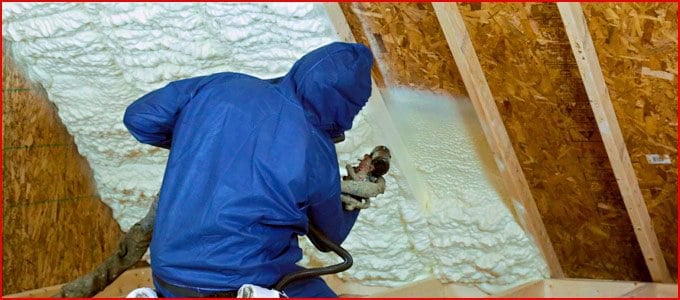

You are looking to insulate your attic to keep heat from escaping, but you’re not sure which insulation type will meet your needs.
Unless your home was built for energy efficiency, you could probably reduce your monthly energy bills by adding or updating the attic insulation. Many older homes have inadequate, damaged, or improper insulation compared to homes built today, but adding insulation to a newer home can pay for itself in just a few years, according to the U.S. Department of Energy. This includes the attic, where many homes lose heat during the winter months.
RetroFoam of Michigan has more than 17 years of experience insulating thousands of homes across the lower peninsula, as well as the greater Toledo area. While our expertise is with spray and injection foam insulation, we also know quite a bit about traditional attic insulations like fiberglass and cellulose.
Types of Attic Insulation
The most common types of attic insulation are cellulose, fiberglass, and spray foam.
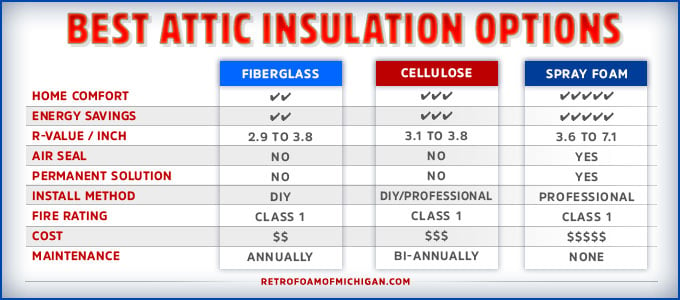
As you can see from the image above, there are some differences in the benefits these materials have to offer.
Let's take a a closer look at each material to see which will be best for your attic's needs.
Best Way to Insulate an Attic: Cellulose vs Fiberglass vs Spray Foam
As part of our ongoing mission to educate our customers, we are here to discuss the best insulation for attics and the pros and cons that go along with each insulation type.
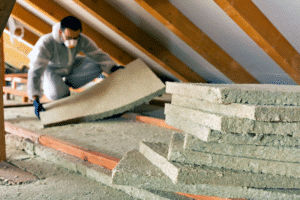 Cellulose Attic Insulation Pros and Cons
Cellulose Attic Insulation Pros and Cons
Cellulose insulation is the oldest material used in home insulation. It can be either a loose-fill material or blown-in.
Cellulose is primarily made up of recycled newsprint or denim.
Cellulose Attic Insulation Pros:
- Boric acid, borax, or aluminum sulfate used in cellulose insulation provides resistance to mold, pests, and fire that can occur in the attic.
- When blown-in, cellulose gets into some of the tight corners and hard to reach areas in the attic cavities.
- Cellulose is very inexpensive when it comes to attic projects in comparison to other materials.
- Cellulose doesn’t use any greenhouse gases as propellants.
- Cellulose has more recycled material than any other commercially available insulation.
- It can be a Do-It-Yourself attic insulation project.
Cellulose Attic Insulation Cons:
- Cellulose weighs several times as much as fiberglass, which isn’t an issue unless used to insulate an attic slope.
- Cellulose can shift and settle to one side of the attic due to airflow, which can make some areas of the ceiling thinly insulated over time. This means the insulation must be maintained and actively raked to be spread evenly every so often.
- Even though cellulose can fill the attic cavities, it is not an air seal. That means cold and hot air can move through the space without any barriers, raising monthly energy bills.
- Homes with furnace duct systems in the attic can expect some of the cellulose dust to recirculate through the house.
- Cellulose must be kept dry in the attic as it absorbs up to 130 percent water by weight.
- After cellulose insulation absorbs water, the chemical fire treatment is destroyed.
- It dries very slowly after absorbing water, which causes it to deteriorate and settle in the attic cavities.
- Modern cellulose settles up to 20 percent, which is problematic concerning closed cavities in attics, causing the home to be uncomfortable and energy bills to rise. This also means more cellulose may need to be added over time due to this settling.
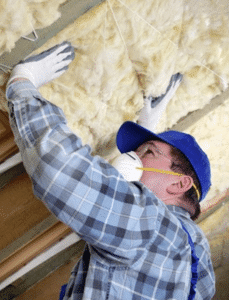 Fiberglass Attic Insulation Pros and Cons
Fiberglass Attic Insulation Pros and Cons
Fiberglass is an insulation material that consists of extremely fine glass fibers and is found in most homes. It is commonly used in two forms – blankets, which are batts and rolls, and loose-fill.
Fiberglass insulation is made of plastic reinforced by tiny glass fibers. This composition gives the plastic additional strength while improving its insulation capacity.
Fiberglass Attic Insulation Pros:
- Can be a Do-It-Yourself attic project for an experienced handyman.
- Fiberglass is relatively inexpensive for attic projects compared to other materials.
- Suited for standard stud and joist spacing in attics that are relatively free from obstructions.
Fiberglass Attic Insulation Cons:
- Fiberglass in the attic can trap allergens, dust, and moisture, which can lead to mold growth.
- When it is disturbed in the attic, fiberglass insulation releases particulates into the air, which may be inhaled.
- When inhaled, particles can cause coughing, nosebleeds, and other respiratory ailments.
- If a person must disturb fiberglass installed in the attic, they should wear gloves, long-sleeved shirts, pants, and goggles.
- Fiberglass in the attic still allows for airflow, a significant source of high energy bills and uncomfortable homes.
- Small particles that come into contact with skin can lodge in pores, causing itchiness, rashes, and irritation.
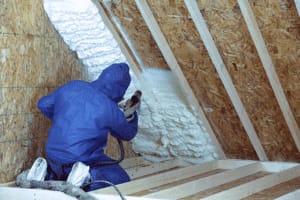 Spray Foam Attic Insulation Pros and Cons
Spray Foam Attic Insulation Pros and Cons
Spray foam insulation is an air barrier material that creates a seal against air movement. Open cell spray foam insulation can expand up to 100 times its original size to fill every nook and cranny in the cavity where it is applied.
Spray foam insulation’s main ingredients are water-blown and organic chemical compounds derived from petroleum extracts.
Spray Foam Attic Insulation Pros:
- Environmentally safe.
- Class one fire rated for the attic and other open cavities in the home.
- It doesn’t retain water, meaning it doesn’t promote mold and mildew growth if the roof leaks into the attic.
- Insulates the attic by creating an air seal, helping to lower monthly energy bills.
- It can create a semi-conditioned space by insulating the roof deck in an unvented attic.
- Spray foam insulation isn’t a food source or inviting place to nest for pests that can get into the attic.
Spray Foam Attic Insulation Cons:
- More costly than traditional forms of insulation used in the attic, but the long-term cost of spray foam should be considered.
- Spray foam is too complicated for a DIY attic project for the attic. It must be installed by a professional.
- Some brands of open cell spray foam have a slight odor after it has been applied, so it is important to watch which brand is being installed.
The Best Insulation for Attics
Now that you have reviewed the pros and cons of spray foam, fiberglass, and cellulose insulation you may have come to a conclusion on the best type of insulation for your attic.
If you are considering spray foam attic insulation and live in Michigan’s lower peninsula or the Toledo, OH area, give us a call at 866-900-3626 for a free estimate, or fill out the form on our website.
If you'd like to learn more about what foam insulation has to offer to a homeowner, check out our Learning Center.
Related Articles
My Attic is Very Hot! How to Cool Down and Fix a Hot Attic
Spray Foam Attic Floor or Rafters: Which is Best to Insulate?
Foam vs Fiberglass vs Cellulose: Which Insulation is Best for My Existing House?
About Amanda Ringler
Amanda previously has worked as a breaking news and crime reporter, TV news producer, and editor in Flint and Detroit. Throughout her career as a journalist, she has won several awards from The Society of Professional Journalists - Detroit Chapter and the Michigan Press Association. As part of the RetroFoam of Michigan family, Amanda uses her experience as a journalist to write content that will help educate homeowners on the benefits of foam insulation. When Amanda isn’t writing, she’s spending time with her husband and rescued huskies. She also loves knitting, making art, cooking, and hosting dinner and a movie night for friends and family.

.jpg)
